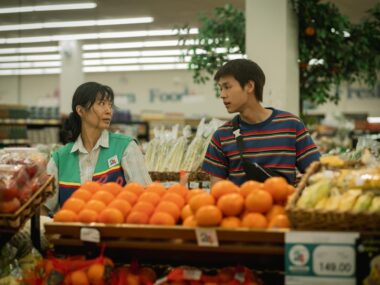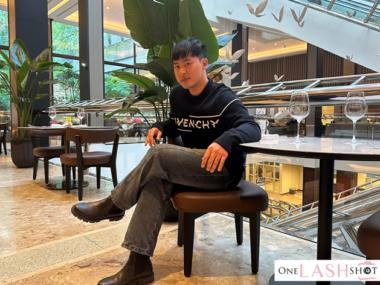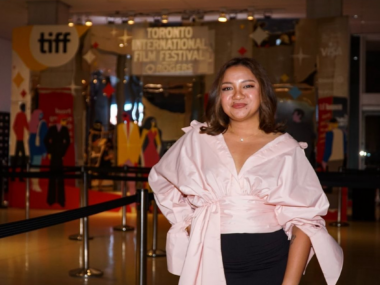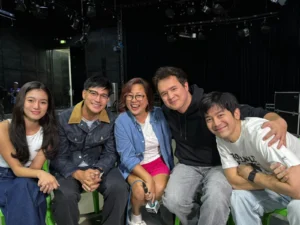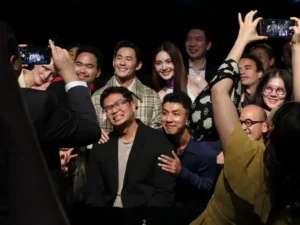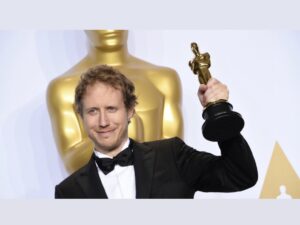Mukaddas Mijit is an ethnomusicologist, filmmaker, dancer, and choreographer, born in Urumchi in the Uyghur region. She has taught visual anthropology and made documentaries in France on traditional artistic practices.
Nikah!, co-directed with Bastien Ehouzan, is her first medium-length film. She became aware of how little the outside world knew about Uyghur culture when she moved to Paris in 2003 to study classical music. After that, she started studying ethnomusicology, focusing on how Uyghur dance and music are staged. In 2015, she earned her PhD.
As a dancer, Mijit has performed internationally and collaborated with several performers, creating innovative art works that integrate traditional Uyghur music and dance with other cultures and styles. As a filmmaker, she has produced several ethnographic documentary films.
In Nikah!, as her younger sister gets married, 27-year-old Uyghur woman Dilber (Guzalnur Uchqun) needs to deal with the societal pressure as according to their opinion it is high time for her to get married too. Watch NIKAH at the Toronto Reel Asian International Film Festival on November 20. Tickets are available here.
One Lash Shot had the opportunity to speak with Mukaddas Mijit, the co-director and co-scriptwriter, about the behind-the-scenes of Nikah!.

What made you interested in movies?
Actually, it goes way back to my first fieldwork as an ethnomusicologist. I was just starting my master’s degree in France and I had to do my fieldwork. I went back. I was figuring out ways to document everything I had been encountering in my own culture because I was learning a lot, that I was not able to learn before I left my country actually.
I used my camera to document everything that I had been seeing. I did a lot of interviews, I recorded songs, weddings and music. Specially I was brought to the home of a Sufi master, in my parents’ hometown. I recorded their ritual as it occurred and I had the immense privilege to listen to his memories actually. He was quite old and passed away a few years later. And I was privileged to discover the existence of another world and another way for spirituality that I had never been taught, neither by my parents nor school, because that was kind of forbidden to learn.
Because I had the recordings of the rituals and his sayings, I tried to make something out of it and I made my first ever ethnographic film to be part of my master’s degree.
So, then I felt that this is something that I am really interested in and that I want to film music, dance and my culture and who wants to share stories with me and I want to make films. So, from there, I made several documentaries and ethnographic films. I edited most of them myself. I self-taught how to edit films and then, eventually I wanted to go into it further and that’s how Nikah! came about.
You collaborated with Bastien Ehouzen on this project. How did you both end up working together in the first place and how did you fuse both your cultures into Nikah?
When I first decided that I wanted to make this film about Uyghur women, especially the social pressure that a woman gets- it was around 2015- I thought I could go back home and shoot the film there.
I wrote the first draft with a friend. We sent it to different production companies. Bastien actually responded as a producer to meet with us and to develop this idea. For many years to come, Bastien was my producer in the beginning. It was really hard to find funding because I am not from the film world. For funders it was like, “Another story of an oppressed woman, so why do we need to spend money for such projects?”
It was really hard for people to understand that the main character, ‘Dilber’, is not the hero. She will not destroy all the traditions, systems and become something else. So, it was kind of complicated to find funding in France. Then the political changes came in the Uyghur region and we tried to include it in the film and still, it was a very heavy project to put together as a first-time filmmaker. And then, Bastien joined as a producer as well as someone who knows the film world better.
It was challenging I would say as to how we collaborated because I was new to the Uyghur world, while Bastien was new to the Uyghur culture.
So, it was a constant debate on what to show, what not to show and which audience would watch it. It was a rich collaboration because we had to discuss everything in depth, to make sure that this film is not only for Western audiences, but also Uyghur audiences.
Where was the film shot?
I thought we could go back and shoot it in the Uyghur region, but it was not possible. So, it was shot somewhere in Central Asia. In Central Asia, there is a huge Uyghur diaspora. We still wanted to go closer to the region to have to colors, the atmosphere and some faces, we could immerse in.
How did you go about casting for the role of ‘Dilber’ and the other characters in the film?
Actually, casting was a huge headache, because in the Uyghur diaspora, there are very few professionally trained actors, some of whom were not able to be part of this film. So actually, with my casting assistant, we went on Instagram writing DMs to all young women who were living outside the region and some women even thought that it was a scam, or that we were tricking them or something (laughs).
None of the actors in the film are professional actors. So, for all of them, it was their first time in front of the camera. The challenge we had, besides not having professional actors, was that people had safety concerns.
Luckily enough, we met a few people who were courageous enough to take these roles. Especially, the two sisters and the mother— they all live in Europe. And then we did some casting in Central Asia with the local Uyghur community.
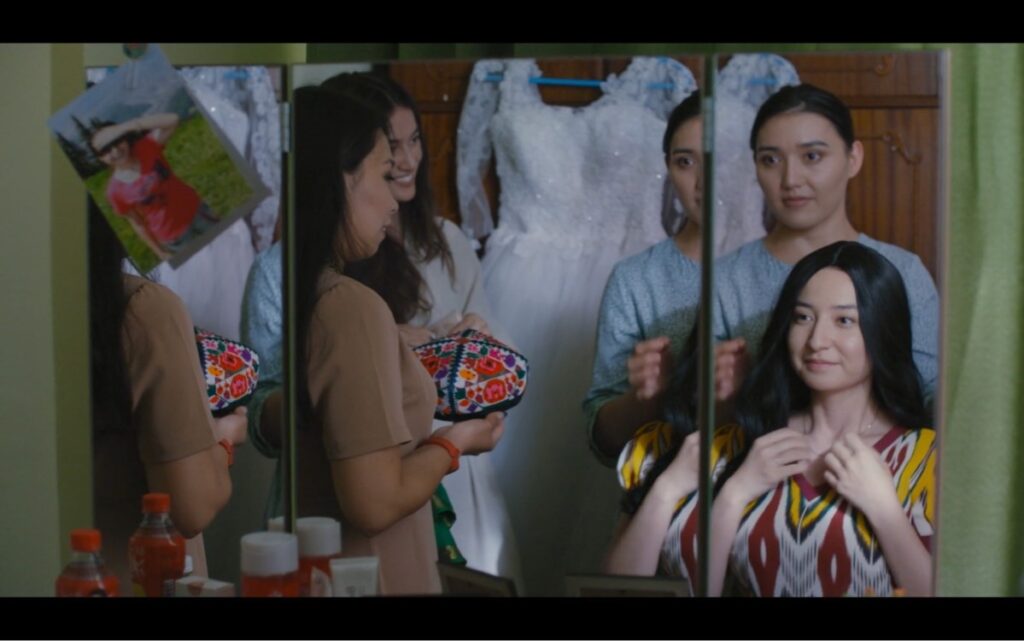
That’s why if you speak Uyghur, you can see the difference in the pronunciation. Some of the actors have Russian accents. I tried my best to ask them to pronounce Uyghur words, phrases or accents in the Uyghur region. But it’s really hard to erase a whole accent in one week of rehearsals. And then I decided to embrace the variety of different accents because it’s a part of our story and it’s also how we as a community outside are trying to hold on to our values, our culture and our memoirs.
You are not just a filmmaker, but also an ethnomusicologist and artist. You moved to Paris in 2003 and have worked in several ethnographic films including Qetiq, Rock’n Ürümchi. I noticed a lot of overlap with your artistry as an ethnomusicologist in this movie. Can you tell me more about it?
Actually, I am really happy that I went through all this burden to do all this academic work and educate myself in academia because it allows me to really understand in-depth my own culture and how to allow myself to use it in a creative way. Because I understand the strength of my culture and the richness of my culture. For some people using Uyghur traditional art in a contemporary way might seem like harming the traditional art, but I don’t believe that.
Also, lots of the things in Nikah! are similar to other projects I am involved in. It’s really scientifically based sometimes, it’s based on my reading, it’s based on my research, it’s based on my data. So, I think it’s a really interesting combination of people like me in between academia and artistic expression. It’s interesting and very challenging at the same time. It’s exciting to mix these worlds. It creates interesting outcomes I would say.
There are scenes which depict ‘Dilber’ dancing beautifully- at Rena’s wedding, then in front of the mirror, once covered in a white shawl. I noticed you choreographed it as well- how did you go about zeroing in on the movements?
Actually, in the original script I wanted to use dance as not a layer of storytelling, but as an inner world of ‘Dilber’ to express some things that are not expressed verbally. There were a lot of scenes that we didn’t use in the end cut.
So, for me, dance is very much linked to a bigger culture. It has a very deep significance for Uyghurs because it is a bodily experience that you have in your body that you cannot take away because dance is in their body and it is a part of a collective experience. So, people come together and they dance together— it is a different way of emotional bonding, which is the basis of the Uyghur culture.
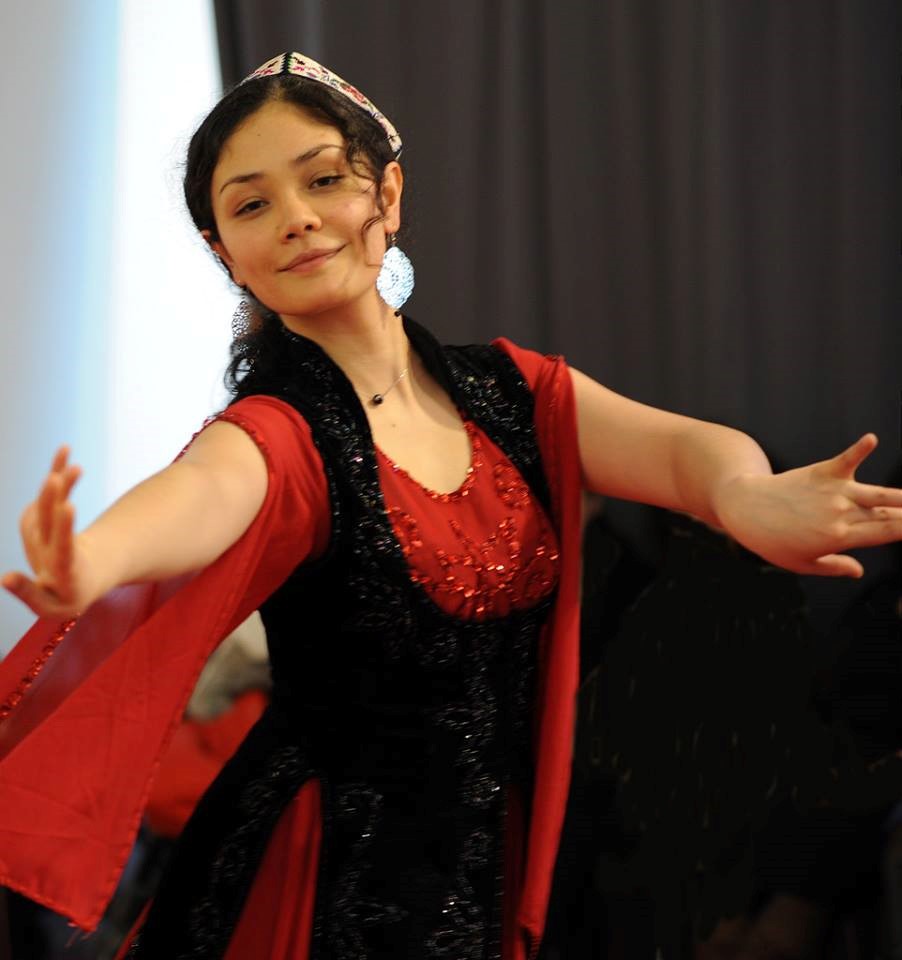
And through dance, there are a lot of emotions that go through, a lot of connections go through and you talk to each other through your dancing body. For a traditional society like Uyghur, it is very important. It is a space where you can express yourself, still inside of this traditional structure, but at the same time, you can be free and express yourself and tell your emotions without being judged.
I mean dance is a very important part of the Uyghur culture as well and a very important artistic tool for me because I am also a professionally trained dancer since I was a kid, and I like using movements to say things that I cannot say using words.
So, that’s how ‘Dilber’ is using dance in the film— to tell things that she cannot really tell with words. Things that she cannot really tell anyone. It’s her safe space.
The cinematography was multi-faceted: the camera captured some moments in vertical form as though giving a realistic feel and some moments in horizontal form, embodying the classic filmic effect. Is there a reason for that?
Yes, because the story was set around 2017. People from outside didn’t really what was happening. For people like me who were outside of the region, phone connections were the only window to look into the region. So that was our choice to let ‘Dilber’ have these phone footage as if she was documenting something that was passing by. She promises her friend at the beginning of the film that she will send images for her to remember. It’s probably something that she would do probably to hide herself from something or to have some kind of hold on the changing landscape. That’s one way of explaining why there are phone images there.
And, we wanted to still maintain the kind of connections between ‘Dilber’ and her friend, which is a metaphor for people like me, living in the outside world, connecting with the Uyghur people. That connection has been broken since 2018. I still don’t have any connection with my friends, I don’t know what’s happening with them.
But before, that was a possibility, so it’s kind of also a nostalgia. Also, another important element as to why we used those images is— that because we couldn’t shoot the film in the region, we still wanted to reclaim the right to represent the images of the region. So, all these images represented on the phone are real images from the region.
It’s our way of stating that this is my land, this is my homeland and I still want to be able to show my homeland to the world.
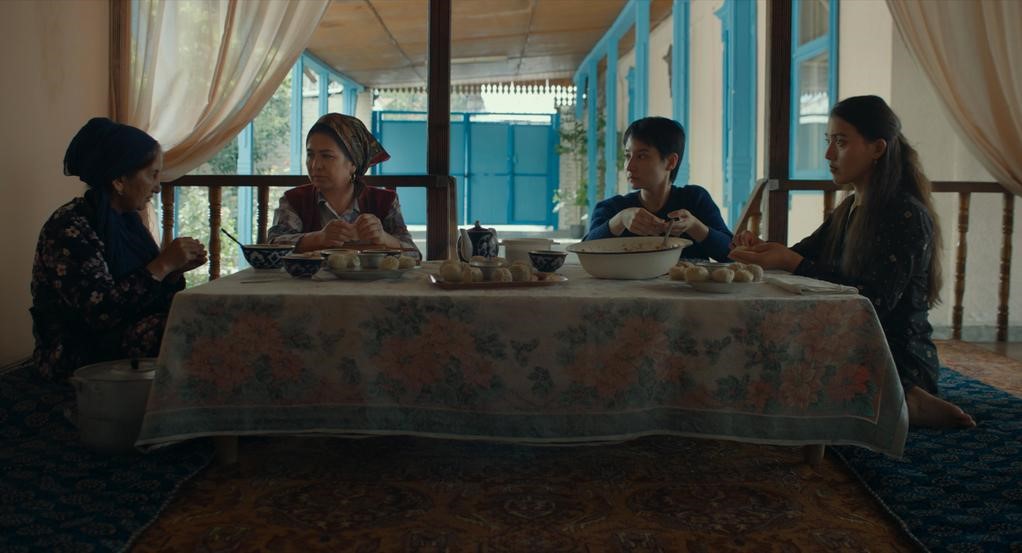
Finally, your undying affection for Uyghur is channeled via the traditions shown in the movie through food, outfits, dance, music, etc. If you had to pick one particular section of the Uyghur culture, in your opinion, which tradition do you think the world would love the most?
I don’t know! (Laughs) I mean sort of like choosing your favourite kid!
But, I think, one thing that I always say is, these are traditions, but at the same time they are living traditions— they are things that people used to practice. It’s part of my culture and I want people to understand that Uyghur culture is not something flat.
There’s not just one dimension to it, it’s multiple-layered and infused by all these different religions, different languages and different people who came across this region. Different civilizations. So, it’s very routed, very complex and very diverse culturally. I want people to have contact with the diversity of my own culture.


